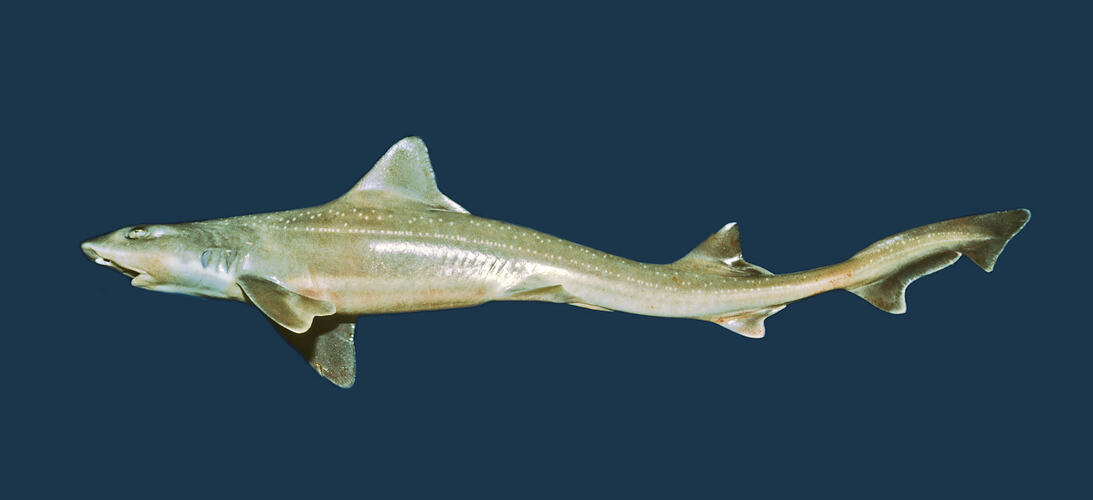General Description
Body very slender, streamlined; two widely-spaced dorsal fins, the second only slightly smaller than the first; teeth in jaws smooth and flattened, arranged in a pavement pattern. Upper surfaces grey, often with small white spots. To 1.8 m.
Biology
Gummy Sharks are more active at night than during the day. They are an important commercial species in southern waters and are sold as "flake". Numbers have declined due to overfishing. This harmless species has crushing teeth well-suited to a diet of shellfish.
Distribution
Southern Australia.
Habitat
Occasionally enters coastal bays and large estuaries, although prefers deeper offshore waters, to a depth of 300 m.
More Information
-
Animal Type
-
Animal SubType
-
Brief Id
Slender, two widely-spaced dorsal fins, grey, often with small white spots.
-
Maximum Size
1.8 m
-
Habitats
-
Diet
Carnivore
-
Hazards
Although considered harmless to humans, has the potential to bite.
-
Endemicity
-
Commercial
Yes
-
Conservation Statuses
DSE Advisory List: Not listed, EPBC Act 1999: Not listed, IUCN Red List: Least Concern
-
Depths
Shallow (1-30 m), Deep ( > 30 m)
-
Water Column Locations
On or near seafloor, Midwater
-
Taxon Name
-
Scientific Author
Günther, 1870
-
Common Name
Gummy Shark
-
Kingdom
-
Phylum
-
Subphylum
-
Superclass
-
Class
-
Subclass
-
Order
-
Family
-
Genus
-
Species Name
antarcticus

